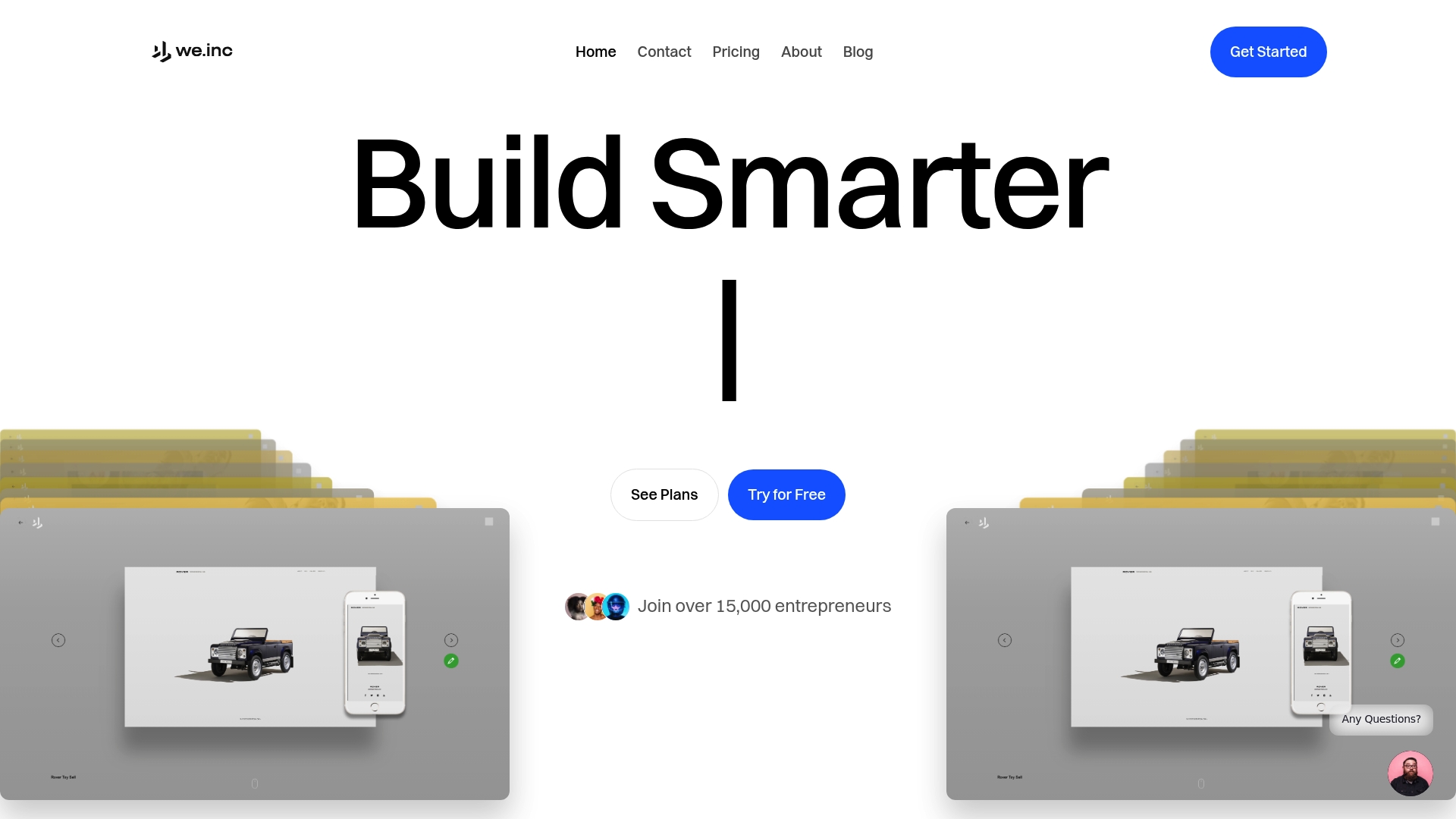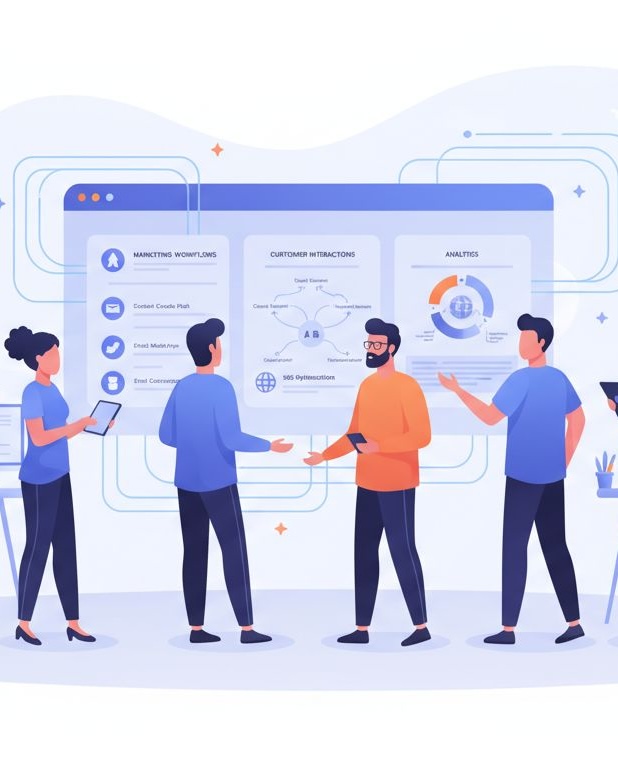Complete Guide to Why Website Automation Matters

Did you know that 82 percent of businesses say automation has improved their workflow efficiency? As digital operations grow more complex, finding smarter ways to manage websites becomes crucial for staying ahead. Website automation reshapes this process by handling repetitive tasks, personalizing user experiences, and keeping sites running smoothly, all while freeing up teams to focus on big-picture growth. Understanding the core ideas behind automation can reveal new opportunities for success and productivity.
Table of Contents
- Defining Website Automation And Its Core Purpose
- Types Of Website Automation And Key Differences
- How Automation Transforms Digital Operations
- Real-World Benefits For Businesses And Agencies
- Hidden Costs, Risks, And Mistakes To Avoid
Key Takeaways
| Point | Details |
|---|---|
| Website Automation Enhances Efficiency | Automation streamlines digital operations, reducing manual tasks and allowing teams to focus on strategic growth. |
| Diverse Types of Automation | Key types include Structure, Layout, Content, and Performance Automation, each serving distinct purposes for enhancing user experiences. |
| Cost Reduction and Improved Engagement | Implementing automation can lead to lower operational costs and higher user engagement, creating more responsive digital ecosystems. |
| Caution Against Over-Automation | Businesses should avoid over-automating, which can result in impersonal experiences, and ensure ongoing quality control and integration. |
Defining Website Automation and Its Core Purpose
Website automation represents a transformative approach to digital management, enabling businesses to streamline complex online operations without constant manual intervention. According to research from the British Computer Society, automation involves using technology to perform tasks systematically, reducing human effort while maintaining precision and efficiency.
At its core, website automation encompasses several critical functions that dramatically improve digital performance:
- Content Management: Automatically updating, scheduling, and personalizing website content
- User Experience Optimization: Dynamically adapting website interfaces based on user behaviors
- Performance Monitoring: Tracking website metrics and generating instant insights
- Integration Management: Connecting various digital tools and platforms seamlessly
The fundamental purpose of website automation extends beyond mere convenience. By exploring website builder guides, entrepreneurs can discover how these technologies eliminate repetitive tasks, allowing teams to focus on strategic growth initiatives. Automation transforms websites from static digital brochures into intelligent, responsive platforms that adapt in real time to user needs and market dynamics.
Modern businesses recognize that website automation is no longer a luxury but a necessity. It provides a competitive edge by enabling faster response times, personalized user experiences, and data-driven decision making - all without requiring constant manual supervision.
Types of Website Automation and Key Differences
Website automation isn’t a monolithic concept but a diverse ecosystem of specialized technologies designed to streamline digital operations. According to research from the British Computer Society, website automation can be strategically categorized into four primary types, each serving distinct organizational needs and technological objectives.
Structure Automation focuses on intelligent user path recommendations, dynamically suggesting website navigation based on individual user behaviors and interactions. Layout Automation takes this further by automatically adjusting graphical elements and design configurations in real-time, creating personalized visual experiences that adapt to user preferences.
Another critical category is Content Automation, which handles the complex task of retrieving, organizing, and publishing digital content without manual intervention. In parallel, Performance Automation optimizes backend web server operations, ensuring rapid load times and seamless user experiences. Exploring AI tools for startups can provide additional insights into how these automation strategies can be implemented effectively.
These automation types are not mutually exclusive but interconnected strategies that collectively transform websites from static platforms into intelligent, responsive digital ecosystems.

Here’s a comparison of the four primary types of website automation:
| Automation Type | Main Function | Example Impact |
|---|---|---|
| Structure Automation | Intelligent navigation suggestions | Personalized user pathways |
| Layout Automation | Dynamic design adjustments | Tailored visual experiences |
| Content Automation | Automatic content management | Scheduled blog publishing |
| Performance Automation | Backend optimization & monitoring | Faster site load times |
| By understanding and implementing these automation approaches, businesses can create more engaging, efficient, and user-centric online experiences that continuously evolve with changing user expectations and technological landscapes |
.
How Automation Transforms Digital Operations
Digital operations are undergoing a radical transformation through intelligent automation technologies that fundamentally reimagine how businesses interact with their online platforms. According to research from the British Computer Society, automation isn’t just a technological upgrade - it’s a strategic approach that dramatically reduces manual effort while enhancing user engagement and operational efficiency.
The transformation occurs through several key mechanisms:
- Adaptive User Experiences: Automatically tailoring website interfaces based on individual user behaviors
- Intelligent Content Management: Dynamically retrieving, organizing, and presenting relevant content
- Real-Time Performance Optimization: Continuously monitoring and adjusting website performance metrics
- Predictive User Interaction: Anticipating user needs and proactively presenting personalized pathways
By exploring AI tools for startups, businesses can unlock unprecedented levels of digital efficiency. Automation enables organizations to move beyond static, one-size-fits-all digital experiences toward dynamic, responsive platforms that learn and adapt in real time.
Ultimately, website automation represents more than a technological trend - it’s a fundamental shift in how digital operations are conceived and executed. By eliminating repetitive tasks, providing instantaneous personalization, and creating intelligent feedback loops, automation empowers businesses to focus on strategic growth while delivering exceptional user experiences that feel intuitively crafted for each individual visitor.
Real-World Benefits for Businesses and Agencies
Website automation delivers transformative advantages that extend far beyond simple technological efficiency. According to research from the British Computer Society, implementing automation strategies can dramatically reduce operational costs while simultaneously enhancing user engagement and organizational productivity.
The real-world benefits for businesses and agencies manifest in several critical areas:
- Operational Cost Reduction: Minimizing manual labor and streamlining repetitive tasks
- Enhanced User Experience: Creating dynamically personalized website interactions
- Accelerated Deployment: Reducing time-to-market for digital initiatives
- Strategic Resource Allocation: Freeing team members to focus on high-value creative and strategic work
Exploring AI tools for startups reveals how automation enables businesses to compete more effectively in increasingly digital marketplaces. Agencies particularly benefit by scaling their service offerings without proportionally increasing human resource investments, allowing them to manage multiple client projects with unprecedented efficiency.
Ultimately, website automation represents a strategic investment in organizational agility. By transforming repetitive processes into intelligent, self-optimizing systems, businesses can create more responsive, adaptive digital ecosystems that continuously evolve to meet changing market demands and user expectations.
Hidden Costs, Risks, and Mistakes to Avoid
Website automation, while powerful, is not a set-it-and-forget-it solution. According to research from the British Computer Society, improper implementation can lead to significant challenges that can potentially undermine the very efficiencies automation promises to deliver.
Businesses must be acutely aware of several critical potential pitfalls:
- Over-Automation: Creating robotic experiences that feel impersonal and detached
- Quality Control: Ensuring automated content remains relevant and high-quality
- Technical Integration: Managing complex interactions between different automated systems
- Ongoing Maintenance: Continuously monitoring and updating automated workflows
Understanding potential cost implications becomes crucial for organizations seeking to leverage automation strategically. The hidden costs often emerge through decreased human oversight, potential system failures, and the need for continuous technological adaptation.
Ultimately, successful website automation requires a balanced approach. While technology can dramatically improve operational efficiency, it cannot completely replace human insight and creativity. Smart businesses will view automation as a collaborative tool that enhances human capabilities rather than a wholesale replacement for strategic thinking and nuanced decision-making.
Unlock the Full Potential of Website Automation with We.inc
The article highlights common challenges like over-automation, complex integrations, and the need for personalized user experiences. If you want to overcome these obstacles and transform your online presence into a dynamic, responsive platform that adapts effortlessly you need a solution built for entrepreneurs and agencies who value automation and growth. We.inc offers an all-in-one platform where you can build high-converting websites without coding, automate marketing with AI chatbots, and seamlessly manage social media — all from a single dashboard. This streamlines your digital operations and addresses key pain points like reducing manual work and accelerating deployment.

Ready to experience the benefits of website automation without the hidden costs or technical headaches? Visit We.inc now to start creating smarter websites that work for you. Discover how easy it is to automate content management, personalize user experiences, and scale your business with our comprehensive digital growth toolkit. Take control today and gain the unfair advantage that will help you stay ahead in a competitive market.
Frequently Asked Questions
What is website automation?
Website automation refers to using technology to perform digital tasks systematically, which reduces manual effort while enhancing efficiency and precision in managing online operations.
How does website automation improve user experience?
Website automation tailors website interfaces and interactions based on user behaviors, providing personalized experiences that adapt in real-time to meet individual visitor needs.
What are the main types of website automation?
The four primary types of website automation are Structure Automation, Layout Automation, Content Automation, and Performance Automation, each serving distinct purposes to streamline digital operations.
What are the potential risks of implementing website automation?
Potential risks include over-automation that leads to impersonal user experiences, quality control issues with automated content, complex technical integrations, and the need for ongoing maintenance to ensure effectiveness.
%20(1).svg)

